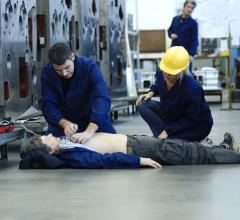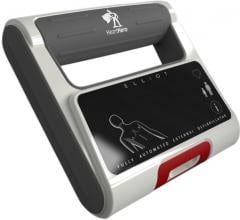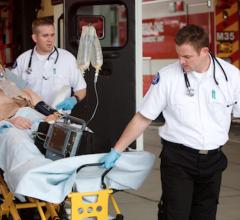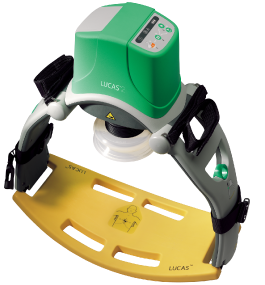
October 22, 2013 — A 56-year-old man who had a heart attack survived and is recovering at home after receiving two hours and forty-five minutes of cardiopulmonary resuscitation (CPR). The length of CPR time is believed to be among the longest on record and was made possible because of a mechanical chest compression machine called the Lucas device.
While the Lucas performed CPR, Johannes Brechtken, M.D., HealthPartners interventional cardiologist, Regions Hospital, performed angioplasty to open the man’s clogged arteries.
Clinically dead for two hours and forty-five minutes
Tim Franko was at his job as a mechanic when his heart stopped contracting on Aug. 19. Medics applied the Lucas CPR device while the EMS crew applied shocks to try to establish a normal heartbeat. While receiving CPR, Franko was conscious with his eyes open. The medics communicated with him with eye blinking.
He was transported to Regions' emergency room with the Lucas performing CPR. After more than 90 minutes of CPR, his heartbeat was briefly restored and he was transferred to the cath lab. After arriving, his heart stopped beating and the Lucas device was again turned on. While Franko was receiving CPR, Brechtken inserted a catheter and removed a clot in the large artery known as the “widow maker.” A short time later, Franco’s heart began to beat again. The next morning, Franko woke up with full brain function and was able to go home ten days later.
Franko had been clinically dead for two hours and forty-five minutes. He had no heartbeat and was kept alive with the help of the Lucas device. In addition, he received a total of 32 shocks to his chest.
“A case like this case breaks new ground and suggests that we might be able to save more lives without brain damage,” said R.J. Frascone, M.D. and medical director for emergency medical services, Regions Hospital. “We may be able to catheterize certain patients while getting CPR using Lucas.”
For more information: www.healthpartners.com

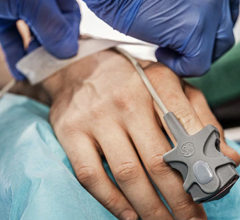
 July 28, 2023
July 28, 2023 


